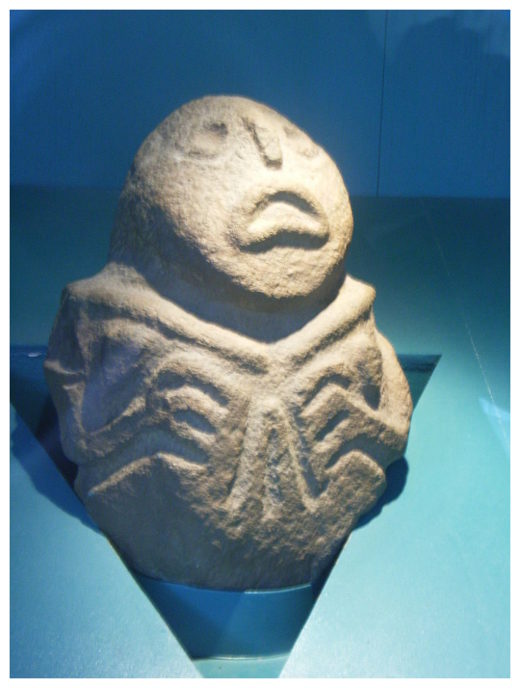
Lepinski Vir is best known for being a gateway site between Neolithic Anatolia and Mesolithic Europe. Essentially, the 'Anatolian farmers' who migrated or invaded Europe after the 8.2 kiloyear event (around 6200 to 6300 BC) appear to have used this route. It is one of the very first European sites to have adopted agriculture, thereby entering the Neolithic age.
Before the main phase of occupation at Lepinski Vir, from 6200 to 5900 BC, a few small Mesolithic settlements on this site are known over the preceding few thousand years.
However, the main phase of occupation is quite different to these earlier settlements. Apart from adopting agriculture, they built trapezoidal plan, or 'fan' shaped, houses with stone floors in which various animal remains have been found. These are usually interpreted as grave goods, accompanying burials under the floors of houses, like at Catalhoyuk.
The most interesting thing for us are the species used in these graves. According to a paper by Vesna Dimitrijevic in 2008, the most common animal species remains found inside these houses are: boar, deer and dog. Fish remains are also common, but these are harder to quantify. However the other thing Lepinski Vir is known for are its fish sculptures - see image left. So we can presume that the fish was an important symbol, and not just an important food source, for these people.
In fact, the fish, dog, boar and deer are also some of the most common Pictish symbols (see an earlier post) which have been zodiacally dated. The deer, fish and dog are also seen on the Gundestrup Cauldron (see an earlier post) which has been zodiacally dated. It appears, then, that the Picts and Celts of Neolithic and Iron Age Europe shared many zodiacal symbols with the people of Lepinski Vir.
The good news for us is that we can now work out what the boar symbolised for these people, because of the narrow date range for this phase of occupation of Lepinski Vir (6200 to 5900 BC). Given the dog = Virgo, fish = Pisces, and deer = Gemini, consistent with this date range and our ancient zodiac, the only possibility for the boar is an autumn equinox constellation (at Lepinski Vir circa 6000 BC) and a winter solstice constellation (in Pictish symbols circa 500 AD) where it represents a group of stars currently unused in our modern zodiac between Capricornus and Sagittarius.
So the boar constellation slightly precedes the eagle/vulture constellation. Or it might even replace the eagle/vulture for representing Sagittarius in these cultures - we can't know which option is correct yet. However, this does not mean the boar represents the same constellation at Gobekli Tepe where the boar is also a common symbol. The boar makes little sense on Gobekli Tepe pillars if it represents a constellation just next Sagittarius. There are other differences at Gobekli Tepe too - the bending bird and not the fish represents Pisces for example, and the ibex and not the deer represents Gemini.
Nevertheless, it appears the Neolithic People at Lepinski Vir and the Picts and Celts shared very similar zodiacal symbols, despite being separated by one quarter of a Great (precessional) Year.



Reader Comments
to our Newsletter